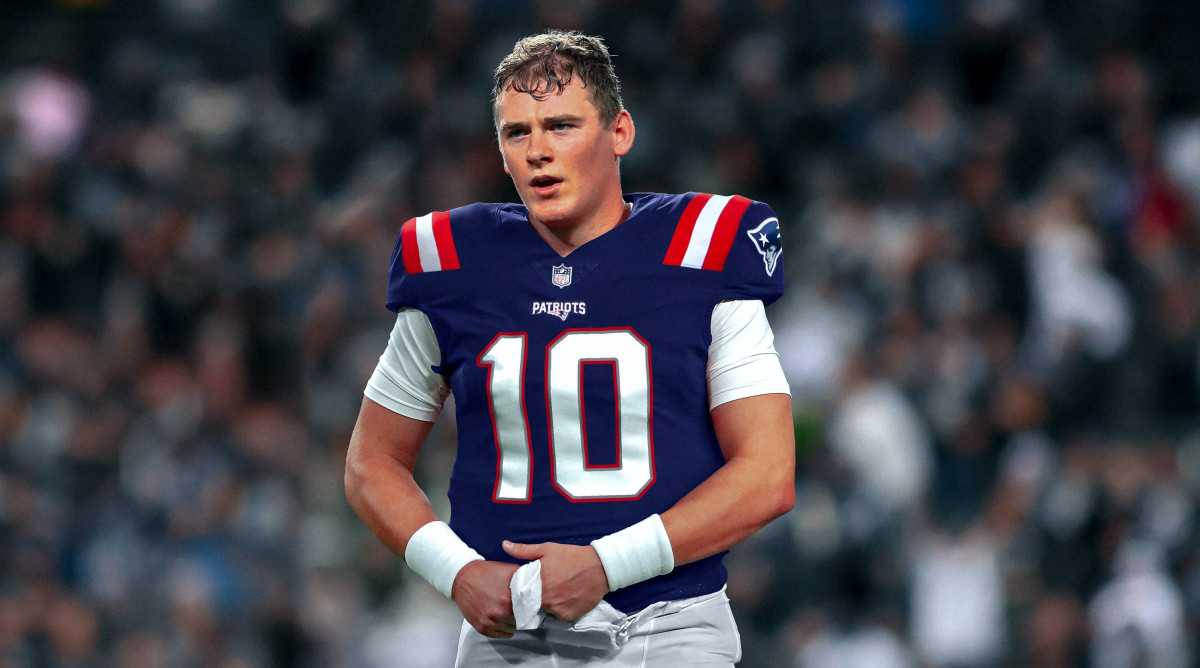The Patriots’ Post-Brady Era Begins Now
Of course the first time Bill Belichick drafts a first-round quarterback, it’s one for whom he could get an unvarnished scouting report from good buddy Nick Saban—and without even having to do any draft-day maneuvering.
Now, the post-Tom Brady era in New England really begins.
The Patriots treated 2020 as something of a gap year, with a league-high eight opt-outs due to the COVID-19 pandemic and a starting quarterback, Cam Newton, who didn't sign with the team until June. They were, for the first time in two decades, mediocre, but that 7–9 record bought them the ticket to a fresh start: the No. 15 pick, which they used Thursday night on Alabama QB Mac Jones.

The oft-cited statistic that Belichick had never drafted a QB higher than pick No. 62—used on Jimmy Garoppolo in 2014—was inherently flawed, given that Belichick had Brady as a starter for 19 of his 26 seasons as a head coach (and he inherited former first-round starters—Drew Bledsoe and Bernie Kosar—for four others). But, as we all know, that changed last year, and the Patriots didn’t have the immediate succession plan that we always expected they might. The pandemic-altered season, which no one expected, became something of a bridge.
It has been clear this offseason that the Patriots were not only willing to veer from their Brady era team-building practices, they had to. Belichick went on an atypical free-agent spending spree, investing close to $90 million on a pair of tight ends alone, potentially taking advantage of a pandemic-depressed salary cap but also making up for years of accrued draft misses. And Thursday night, he used his highest draft pick in 13 years on a quarterback, having traded away Brady’s once-presumptive successor four years earlier.
The 49ers were rumored to be deciding between Jones and Trey Lance, but Kyle Shanahan’s team went with the North Dakota State passer at No. 3, making this the first draft since 1999 in which QBs were selected 1-2-3. From there the intrigue, and the waiting game, started for the QB-needy teams lurking outside the top 10. When the Lions, Panthers and Broncos at 7-8-9 went OL-CB-CB, the possibilities opened up. Chicago made the first move, coming up from 20 to the Giants’ spot at 11 to draft Ohio State QB Justin Fields. The Cowboys (12) and Chargers (13) did not have a QB need, and the Jets traded up to 14 for USC offensive lineman Alijah Vera-Tucker. A path was cleared for New England’s patience to be rewarded.
Jones’s size and athleticism do not stand out, but he has other traits that the Patriots would value: He completed more than 77% of his passes last season, an NCAA record, with only four interceptions. He thrived in high-pressure situations, throwing for 464 yards and five touchdowns in Alabama's national championship win against Ohio State. Yes, the game is trending to favor QBs with varied skill sets, but Pats OC Josh McDaniels has plenty of experience designing a creative and productive offense for a QB who isn’t a running threat.
If Jones hadn’t been there, perhaps Belichick would have made a deal to bring back Garoppolo, whose trade market four years ago was primarily stoked by Belichick’s affection for him. They also re-signed Newton, who now has a year’s experience in the offense and presumably will not again have to fight off a COVID-19 infection in-season.
But Jones was there for the Patriots, setting a new path for the franchise. They now have a first-round QB to develop and play, and a roster newly flush with weapons like Hunter Henry, Jonnu Smith and Kendrick Bourne. For so long, the team’s success was tied to the 199th pick who became the GOAT, but the Jones pick was the Patriots' acknowledging the serendipity involved in that, and the unlikelihood of it ever happening again. They’re necessarily doing things differently in the post-Brady era—they can only hope it leads to the same results.
